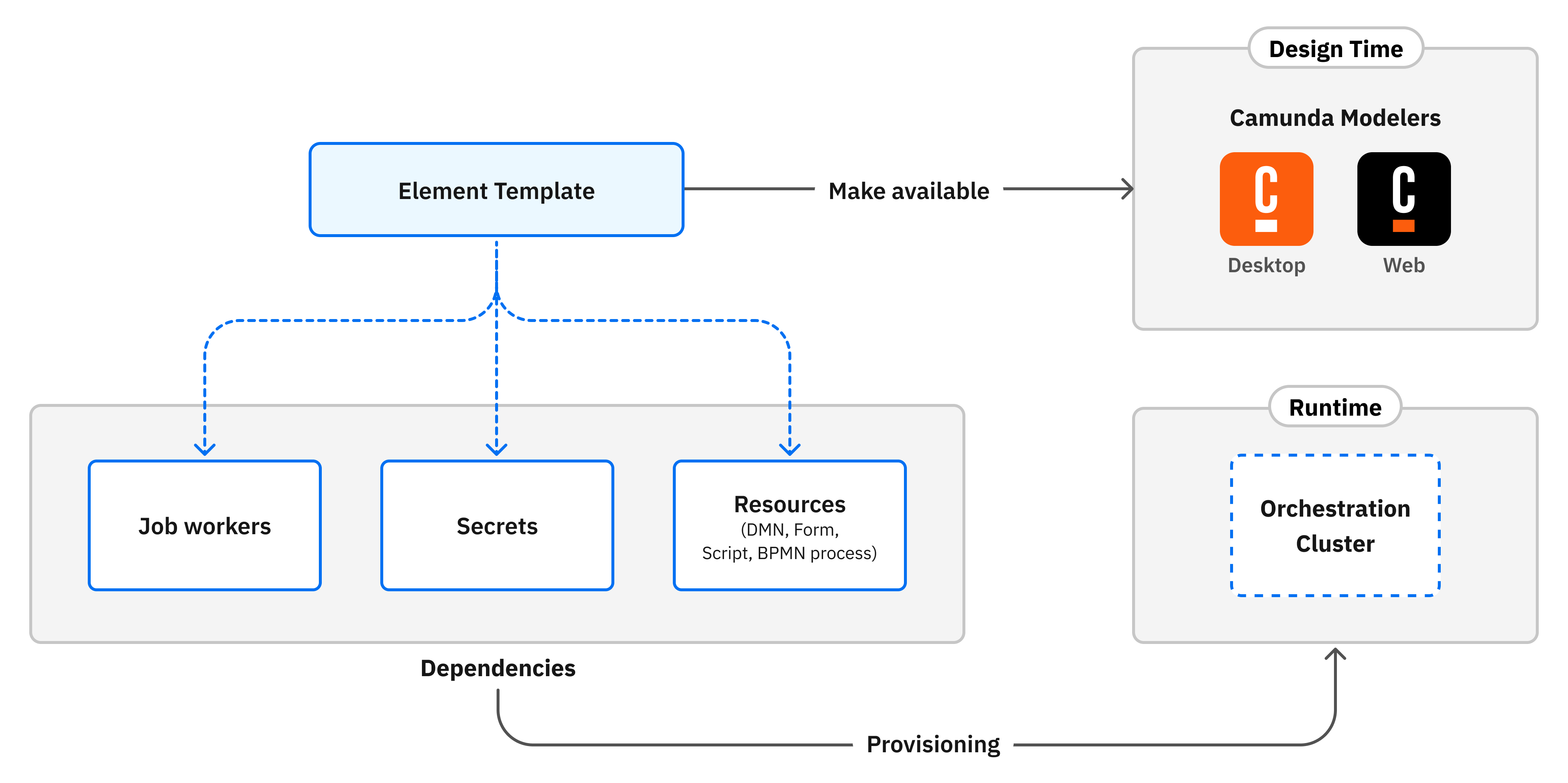Element templates with dependencies
When creating element templates, you may want to link to a resource like a form, or pre-populate a secret expression. Your template might require a specific job worker to execute an action. These are all examples of dependencies.

Element templates can depend on:
- Camunda forms: used in user tasks.
- RPA scripts: used in service tasks.
- BPMN process: used in a call activity. This may introduce nested dependencies (e.g., a called process may depend on other processes and/or resources).
- DMN decisions: used in business rule tasks.
- Job workers: provide behavior for service tasks such as message send events, send tasks, service tasks, business rule tasks, or custom connector runtime.
- Secrets: used in connector elements to access sensitive values (see secrets in self-managed and secrets in SaaS).
To make a template available for use, complete two key steps:
-
Provision dependencies at runtime: Make dependencies available in the clusters that need them.
- For job workers, ensure the runtime is started and connected to the cluster (see hosting custom connectors).
- Secrets must be configured beforehand.
- Other dependency types (e.g., Camunda forms, RPA scripts, DMN decisions) need to be deployed to the cluster.
-
Make the template available at design time: Ensure Web Modeler or Desktop Modeler can access the template for use in your projects.